Automobile Travel Impact Calculator
Estimate Your Daily Travel Impact
Compare your modern commute with pre-automobile era travel using historical data from the article.
Your Daily Impact
When we talk about the modern way we move, automobile is a motor‑powered vehicle built for personal transport. Over the past 130years it’s turned short distances into daily commutes, reshaped cities, and rewired the global economy.
The World Before Cars
Before the late 19thcentury, most long‑range trips relied on horses, trains, or ships. A family traveling from a rural town to a nearby city might spend a full day on a horse‑drawn carriage, paying fares that ate into a household budget. The speed ceiling sat around 8mph on good roads, and bad weather could halt travel entirely.
Railroads did introduce faster links, but they ran on fixed routes, required tickets, and left the “last mile” problem unsolved. People living far from a station faced a secondary journey by foot or horse, limiting mobility for most.
Mass Production Turned Cars Affordable
Enter Ford ModelT in 1908. HenryFord’s assembly‑line technique cut the manufacturing cost by more than 50%, dropping the price from $850 to under $300 within a decade. That price point put a reliable vehicle within reach of middle‑class families.
Mass production didn’t just lower prices; it standardized parts, making repairs easier and creating a new aftermarket industry. The ripple effect spurred the growth of countless suppliers, from tire makers to glass manufacturers.
Roads, Highways, and the Birth of a New Landscape
With more cars on the road, demand for better infrastructure surged. The highway system in the United States exploded after the Federal‑Aid Highway Act of 1956, delivering 41,000miles of interstate roads. These arteries cut coast‑to‑coast travel time from weeks to days.
Highways reshaped towns, often bypassing small communities and concentrating commerce around new exit corridors. Some cities saw downtown decline as shoppers flowed to suburban malls reachable by car.
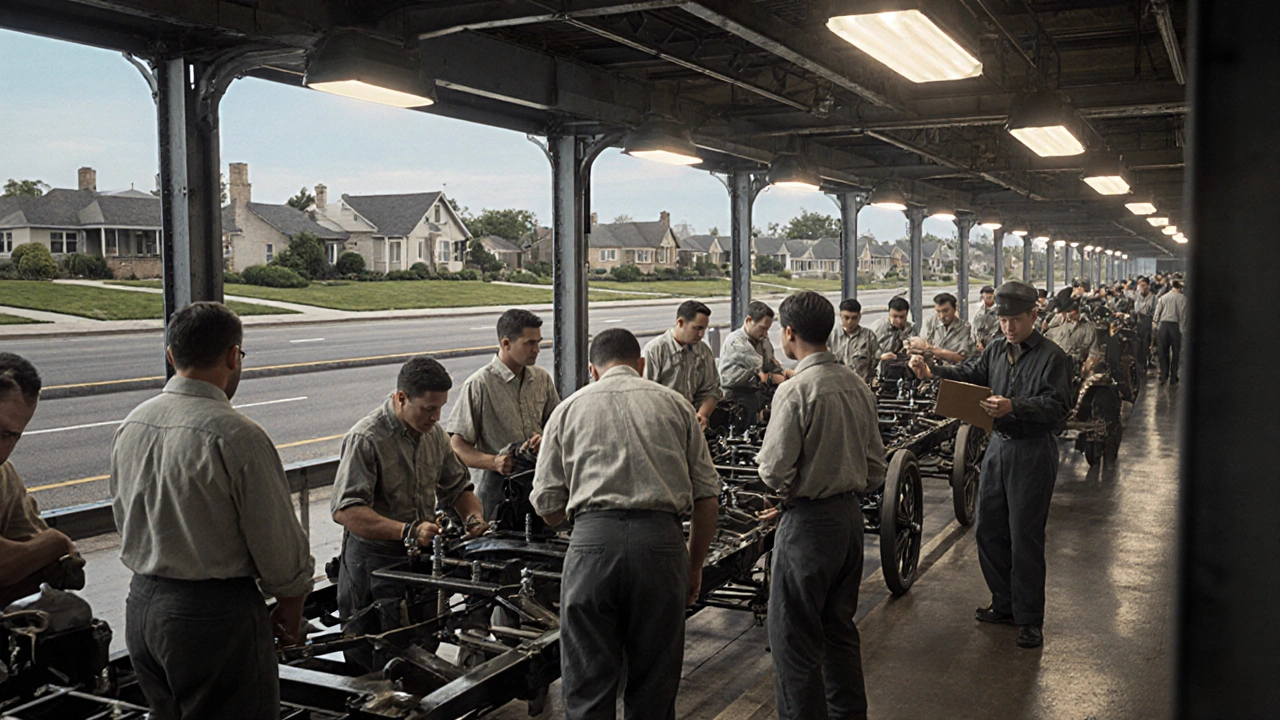
Suburbanization: A Direct Outcome of Car Freedom
The newfound ability to travel 30-40miles comfortably each day birthed the suburban boom. Suburbanization meant single‑family homes sprouted on city outskirts, offering larger yards and lower housing costs. Commuter culture took hold: families would live in a quiet suburb and drive to work in the urban core.
This shift altered demographics, school district funding, and even political representation, as suburban voters began to dominate certain regions.
Economic Ripples: Jobs, Industries, and Global Trade
Automobiles sparked entire new sectors: dealerships, financing, insurance, and repair shops. According to a 2023 industry report, the automotive services market supports over 13million jobs in the U.S. alone.
Vehicle manufacturing also accelerated global trade. Parts sourced from dozens of countries travel across borders before a car even rolls off the assembly line, intertwining economies like never before.
Environmental and Social Trade‑offs
The convenience came at a cost. Internal combustion engines emit roughly 4.6metric tons of CO₂ per vehicle per year, contributing heavily to climate change. Air quality in sprawling metro areas deteriorated, prompting the rise of emissions standards and the push for cleaner fuels.
Socially, car reliance has contributed to sedentary lifestyles. Studies show that neighborhoods built around driving see 30% lower walking rates than dense, transit‑oriented districts.
Modern Shifts: Electric and Autonomous Vehicles
Today, the electric vehicle (EV) market is expanding rapidly. In 2024, EVs accounted for 12% of new car registrations in the U.S., a figure expected to double by 2030 thanks to tax incentives and expanding charging networks.
Simultaneously, autonomous vehicle prototypes are being tested in several cities. While fully driverless cars aren’t mainstream yet, advanced driver‑assistance systems already reduce accidents by up to 40%.
Both trends aim to lower emissions and reshape urban design, potentially reducing the need for massive parking structures and freeing up land for public spaces.
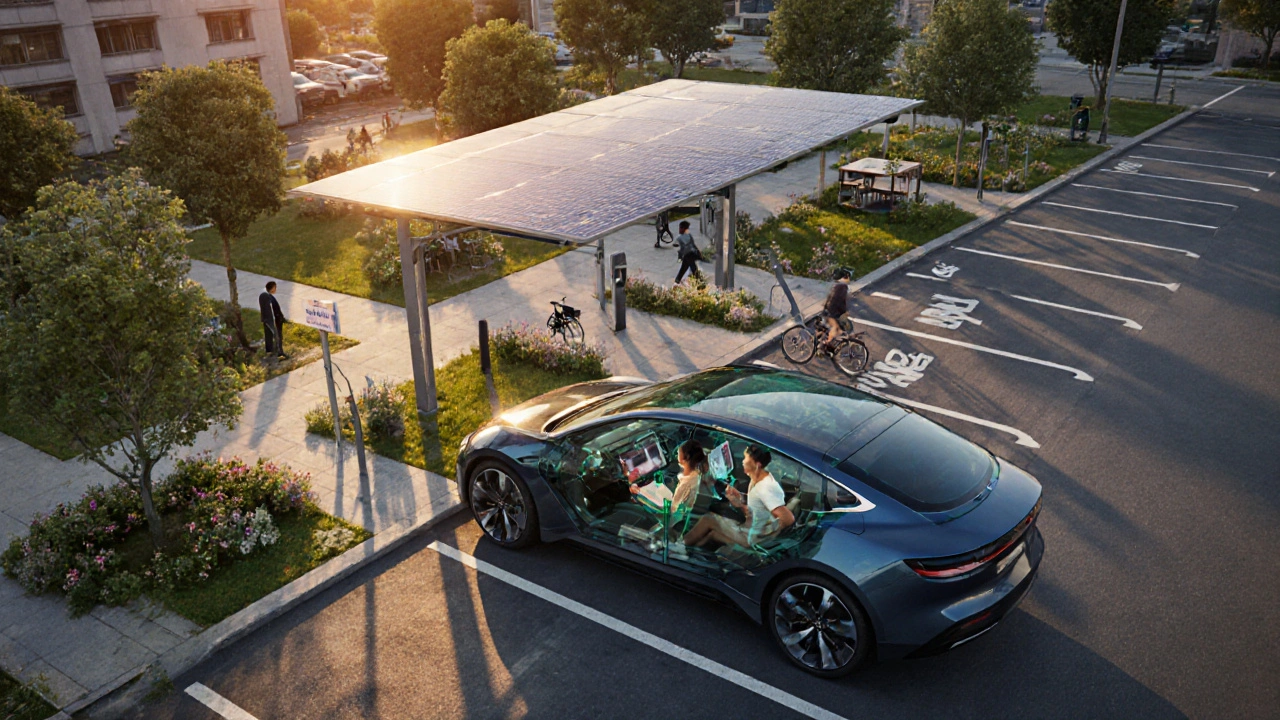
Travel Today: A Comparative Snapshot
| Metric | Before Cars (early 1900s) | After Cars (2020s) |
|---|---|---|
| Average daily travel distance | 10-15miles | 30-45miles |
| Typical travel speed | 5‑8mph (horse‑drawn) | 55‑70mph (highway) |
| Cost of a round‑trip (adjusted to 2025 USD) | $12‑$20 (horse feed, carriage repair) | $6‑$12 (fuel, tolls) |
| Time to travel 100miles | 2‑3days | 2‑3hours |
| Environmental impact (CO₂ per passenger‑mile) | ~0kg (animal power) | 0.12kg (average car) |
These numbers illustrate how cars have turned long distances into everyday errands, but they also highlight the environmental price we pay.
What the Future Holds for Travel
Looking ahead, three forces will shape how we move:
- Electrification - As battery costs fall, EVs could dominate new sales by 2035, cutting tailpipe emissions dramatically.
- Shared mobility - Services like ride‑sharing and micro‑mobility (e‑scooters, bike‑share) reduce vehicle ownership, especially in dense cities.
- Urban redesign - With fewer cars, planners envision walkable neighborhoods, green corridors, and repurposed parking lots serving as parks or housing.
Each trend feeds back into the core idea that automobiles, whether powered by gasoline or electricity, will continue to dictate where we live, work, and play - but the rules of that relationship are changing fast.
Key Takeaways
- Automobiles turned travel from a multi‑day ordeal into a daily routine.
- Mass production made cars affordable, sparking a new consumer culture.
- Highways and suburban sprawl reshaped the physical layout of nations.
- The environmental footprint of personal vehicles is a major modern challenge.
- Electrification and shared mobility promise a cleaner, more flexible future.
Understanding this evolution helps us grasp why today’s transportation policies focus so heavily on sustainability and why the next wave of change may look very different from the roaring engines of the 20thcentury.
Frequently Asked Questions
How did the Ford ModelT make cars popular?
By using an assembly line, Ford cut production time from over 12hours to about 1.5hours per vehicle, slashing costs and allowing average families to buy a reliable car for under $300.
What is the biggest environmental downside of cars today?
Internal combustion engines emit carbon dioxide and other pollutants; a typical gasoline car releases about 4.6metric tons of CO₂ each year, contributing significantly to climate change.
Are electric vehicles truly greener?
When powered by renewable electricity, EVs produce far less CO₂ than gasoline cars. Even with current grid mixes, they emit about 40‑50% less greenhouse gases over their lifespan.
How did cars influence city planning?
Roads widened, zoning shifted to separate residential from commercial areas, and suburbs expanded. Downtown districts often lost foot traffic as shoppers drove to malls near highway exits.
What role does autonomous driving play in future travel?
Self‑driving technology aims to cut human error, increase road capacity, and free up time for passengers. While fully driverless cars aren’t common yet, advanced assistance features already improve safety.
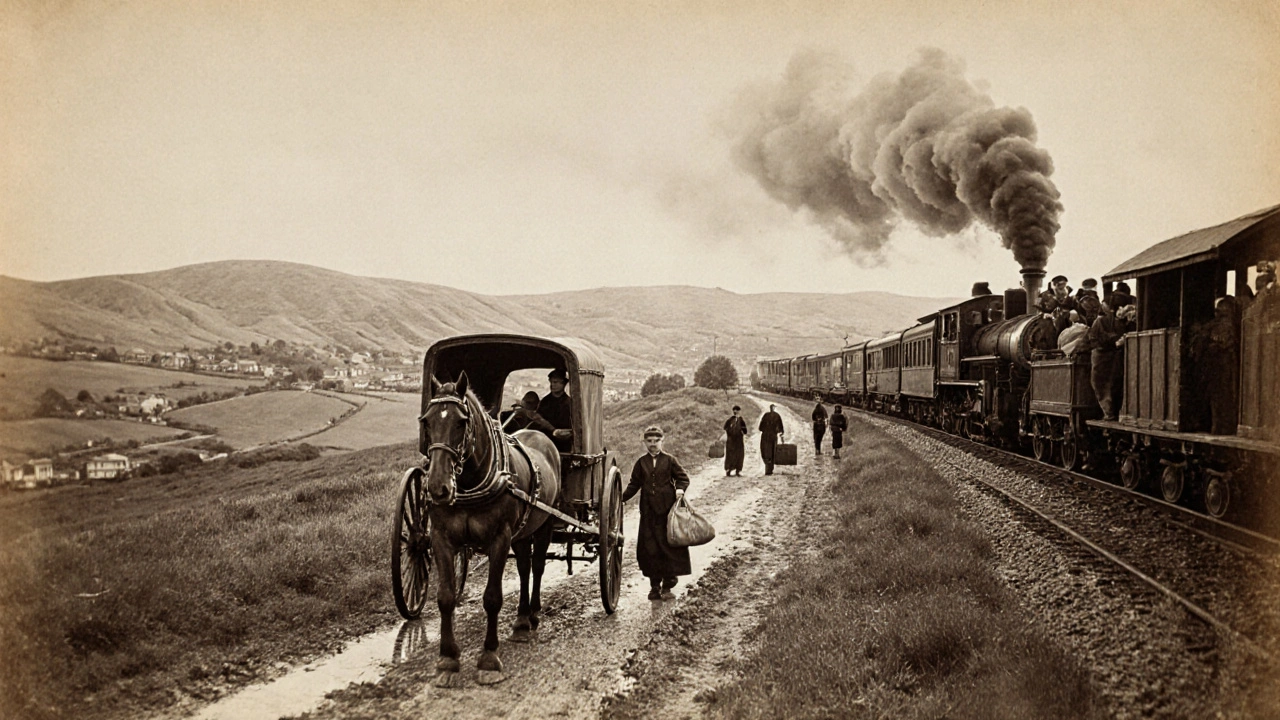

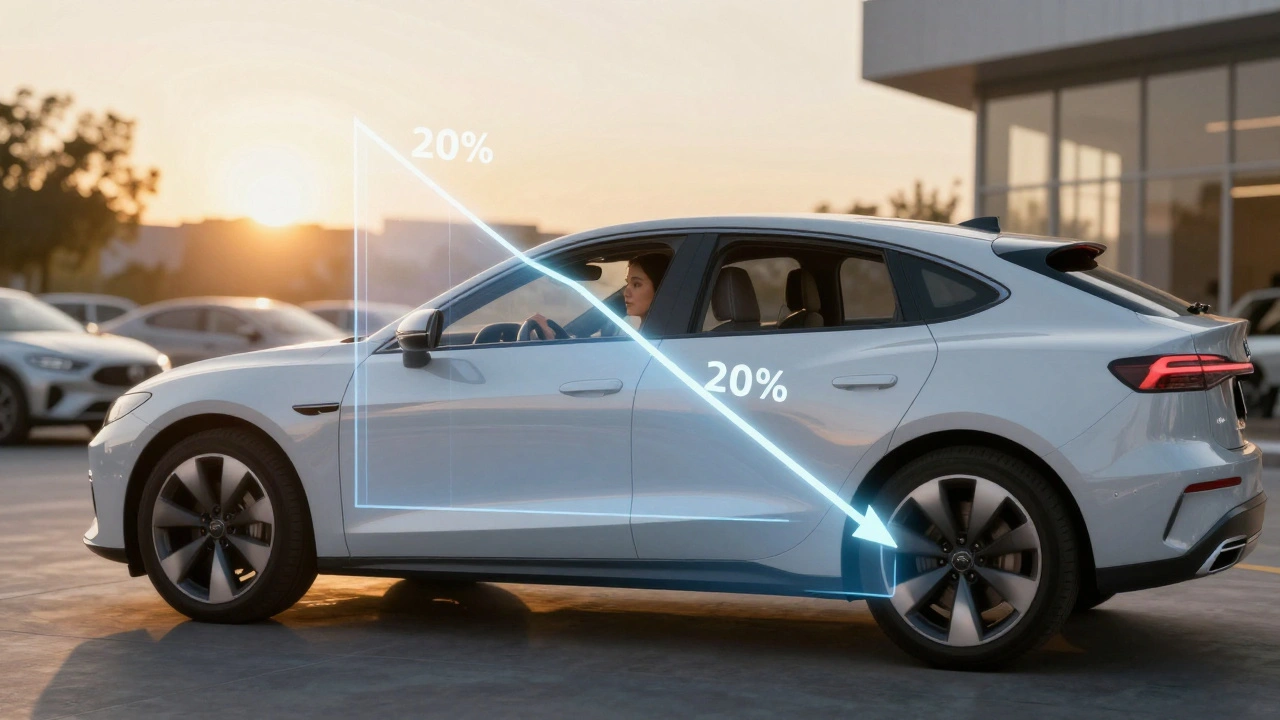
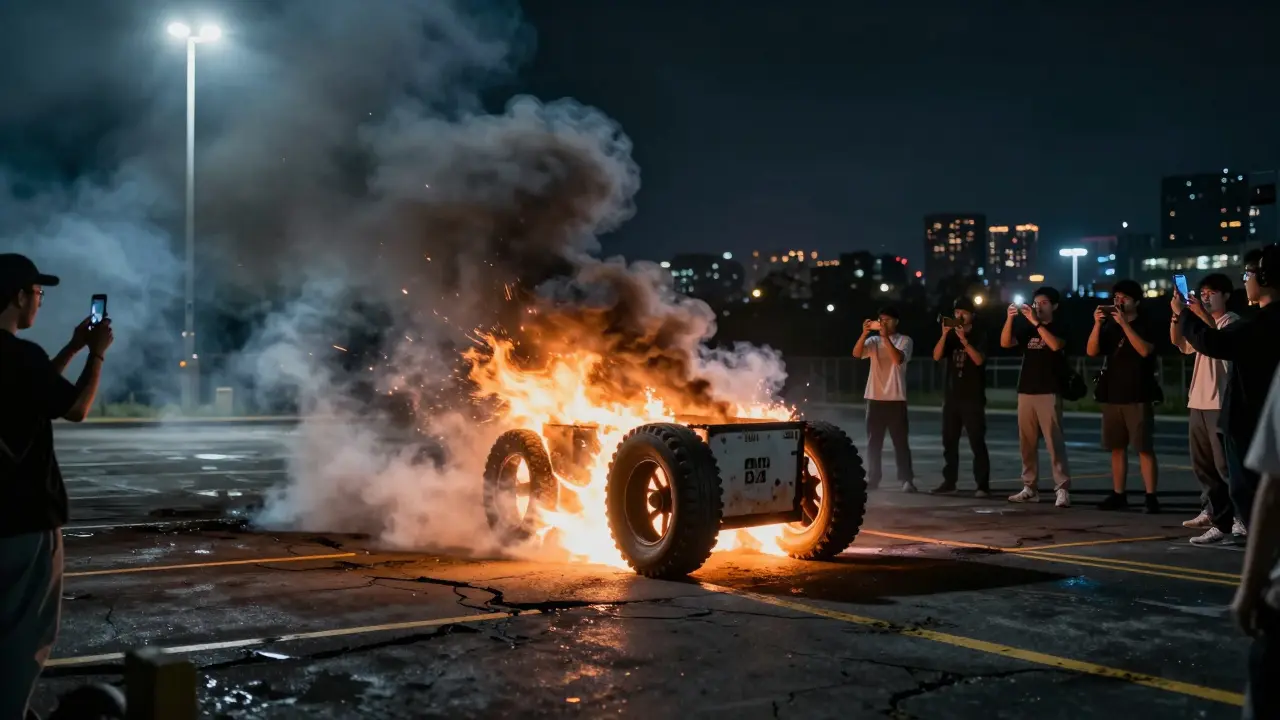

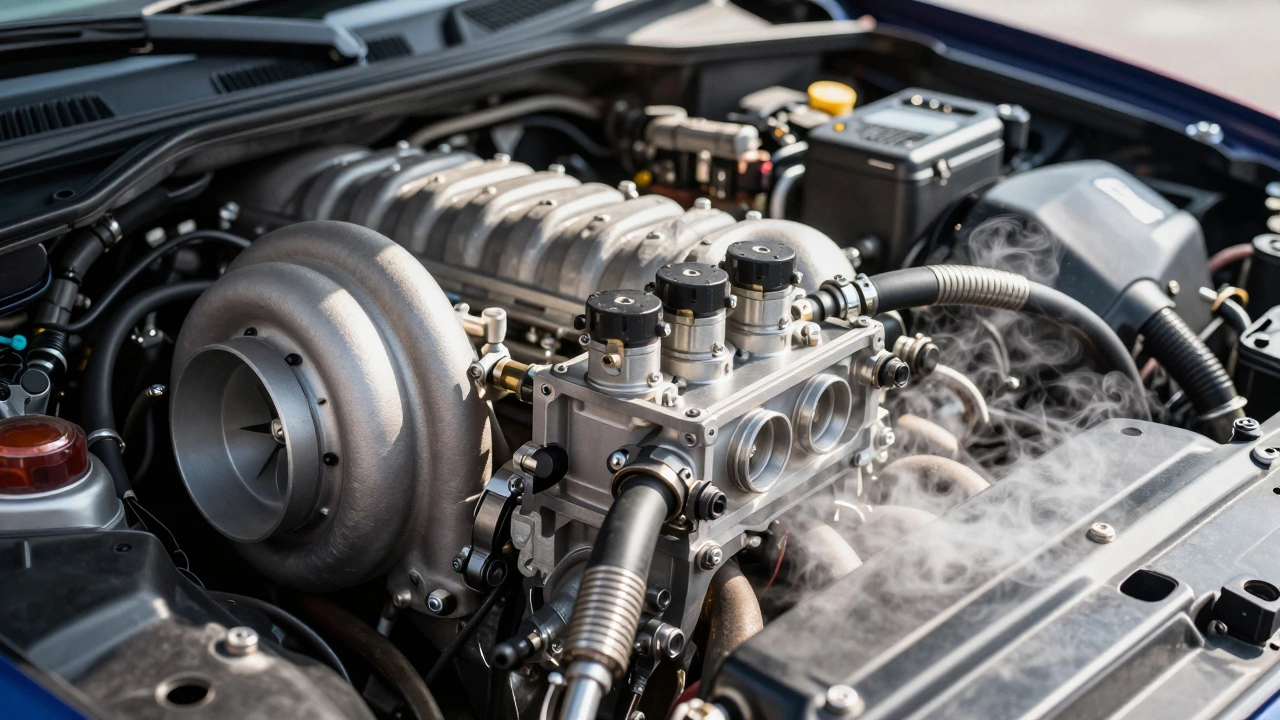
Ray Htoo
October 5, 2025 AT 20:46Cars turned a weekend trek into a daily coffee‑run, didn’t they?
Natasha Madison
October 8, 2025 AT 05:43It’s hard not to notice how every highway seems to whisper the same secret: control. The way the government subsidizes fuel feels like a hidden hand steering us toward endless consumption. Even the newest EV incentives are just another layer of the grand design, a way to keep us glued to a system that never truly frees us. Remember, every road you drive on was built on lands you never owned. The illusion of choice is just that – an illusion.
Sheila Alston
October 10, 2025 AT 14:40The sheer scale of how cars reshaped our societies is awe‑inspiring, yet we must pause to ask ourselves what we sacrificed. We gave up walkable neighborhoods for endless parking lots, trading community for convenience. It’s a moral balance sheet that keeps tipping toward convenience at the cost of health and the environment. We should cherish the progress but also hold it to account.
sampa Karjee
October 12, 2025 AT 23:36The industrial marvel of the Model T was undeniably a triumph of engineering, yet its legacy is a double‑edged sword. By democratizing mobility, it unleashed a cascade of suburban sprawl that forever altered the human footprint on the land. One might argue that the very notion of "progress" became synonymous with endless asphalt. This acceleration of the automobile ethos birthed a culture where distance is trivialized, and the sense of place erodes. While the economic boom was palpable, the social fabric frayed as local commerce dwindled beneath the shadow of highway‑bordered malls. Moreover, the environmental toll, quantified in gigatons of CO₂, is a specter that haunts each commuter today. In hindsight, the narrative of triumph demands a nuanced critique, acknowledging both the liberation of distance and the shackles of dependency it forged.
Patrick Sieber
October 15, 2025 AT 08:33Great overview! The way you broke down each era makes the whole story easy to follow. I especially liked the stats on job creation – it really shows how cars are more than just a way to get from A to B.
Kieran Danagher
October 15, 2025 AT 09:56Sure, the numbers are impressive, but let’s not pretend the traffic jams aren’t a daily horror show. The ‘freedom’ you describe often comes with a side of bumper‑to‑bumper misery.
OONAGH Ffrench
October 15, 2025 AT 11:20The philosophical implication is clear: mobility reshapes identity. As we travel faster, we also lose depth.
poonam upadhyay
October 16, 2025 AT 09:33Wow, where do I even begin?! This article is a roller‑coaster of historical nuggets and mind‑blowing facts-truly a treasure trove for anyone fascinated by how steel beasts have commandeered our lives! First off, the sheer audacity of the Model T's price drop is nothing short of revolutionary-imagine slashing the cost by more than half in just a decade! Then, the way highways stretched across the continent like veins, pumping commerce and culture into every nook and cranny-it's poetic, really. Yet, amidst this progress, we face the undeniable shadow of carbon emissions, a monstrous 4.6 tons per car each year, choking our skies with every mile traveled. The tables have turned, and now electric vehicles glide in like silent saviors, promising a future where the air might actually smell like, well, something other than exhaust fumes! But let’s not ignore the social ripple effects: suburban sprawl turned once‑tight communities into scattered cul‑de‑sacs, eroding the neighborhood spirit. And the economic engine? Oh, the automotive sector fuels millions of jobs-your car isn’t just a vehicle, it’s a livelihood for countless families. When you look at the table comparing pre‑automobile and modern travel, the time saved is staggering-hours turned into minutes, distances shrunk to mere commutes. Yet, each saved hour is also a reminder of our growing dependence on metal boxes that demand fuel, maintenance, and parking spaces that gobble up prime land. The future, as you rightly point out, hinges on electrification, shared mobility, and bold urban redesign. Imagine cities where parking lots become parks! It’s a vision that feels both daring and necessary. In short, automobiles have been both the architects of modern convenience and the culprits behind environmental woes-an intricate dance of benefit and burden that we must choreograph wisely. Thank you for this deep dive; it’s sparked a torrent of thoughts that will keep rattling around my mind for weeks!
Shivam Mogha
October 16, 2025 AT 10:56Nice summary, very concise.
mani kandan
October 18, 2025 AT 17:06The blend of historical context and modern data makes this piece both informative and thought‑provoking. Your colorful language keeps the reader engaged while still delivering solid facts.
Rahul Borole
October 21, 2025 AT 02:03The evolution of the automobile is a testament to human ingenuity and relentless ambition. From the clattering Model T to silent electric predecessors, each milestone reflects our drive to transcend limits. Yet, with every leap forward, we inherit new responsibilities-environmental stewardship, urban planning, and equitable access become paramount. By understanding this lineage, we empower ourselves to shape a future where mobility serves both people and the planet.
Sheetal Srivastava
October 21, 2025 AT 03:26While the macro‑analysis is commendable, the discourse could benefit from a deeper dive into lifecycle assessment metrics-particularly the embodied energy in battery production, which remains a salient bottleneck in our sustainability calculus.
Bhavishya Kumar
October 21, 2025 AT 04:50Precisely articulated; the omission of redundant commas enhances readability.
ujjwal fouzdar
October 23, 2025 AT 08:13In the grand theater of progress, the automobile takes center stage, a glittering chariot of steel and ambition that whispers promises of boundless horizons. Yet, beneath its polished veneer lies a paradox-a conduit of freedom that also binds us to endless roads, endless fuel, endless noise. The roar of the engine becomes a hymn to humanity's desire to conquer distance, but also a lament for the quiet fields surrendered to asphalt. As we accelerate into the future, each mile ticks like a metronome, counting down to a moment when the very roads that liberated us may become the shackles we cannot shed. We are the architects of our own odyssey, laying down ribbons of concrete that stitch together cities, suburbs, and deserts alike. And in that stitching, we stitch also the air with particles, the soil with oil, the souls with an ever‑growing yearning for speed. The electrification wave promises a rebirth-a phoenix rising from the smog, yet it too carries the weight of rare‑earth extraction and the silent yearning for more power. The narrative is not merely about machines, but about the human condition: our insatiable appetite for movement, for progress, for the next horizon. Thus, the automobile is both our greatest collaborator and our most demanding master, urging us to reflect on whether the journey truly justifies the cost, or if the road ahead beckons a different, quieter path.
Anand Pandit
October 23, 2025 AT 09:36Your poetic take on the car’s legacy is inspiring! It reminds us to cherish innovation while staying grounded in responsibility.